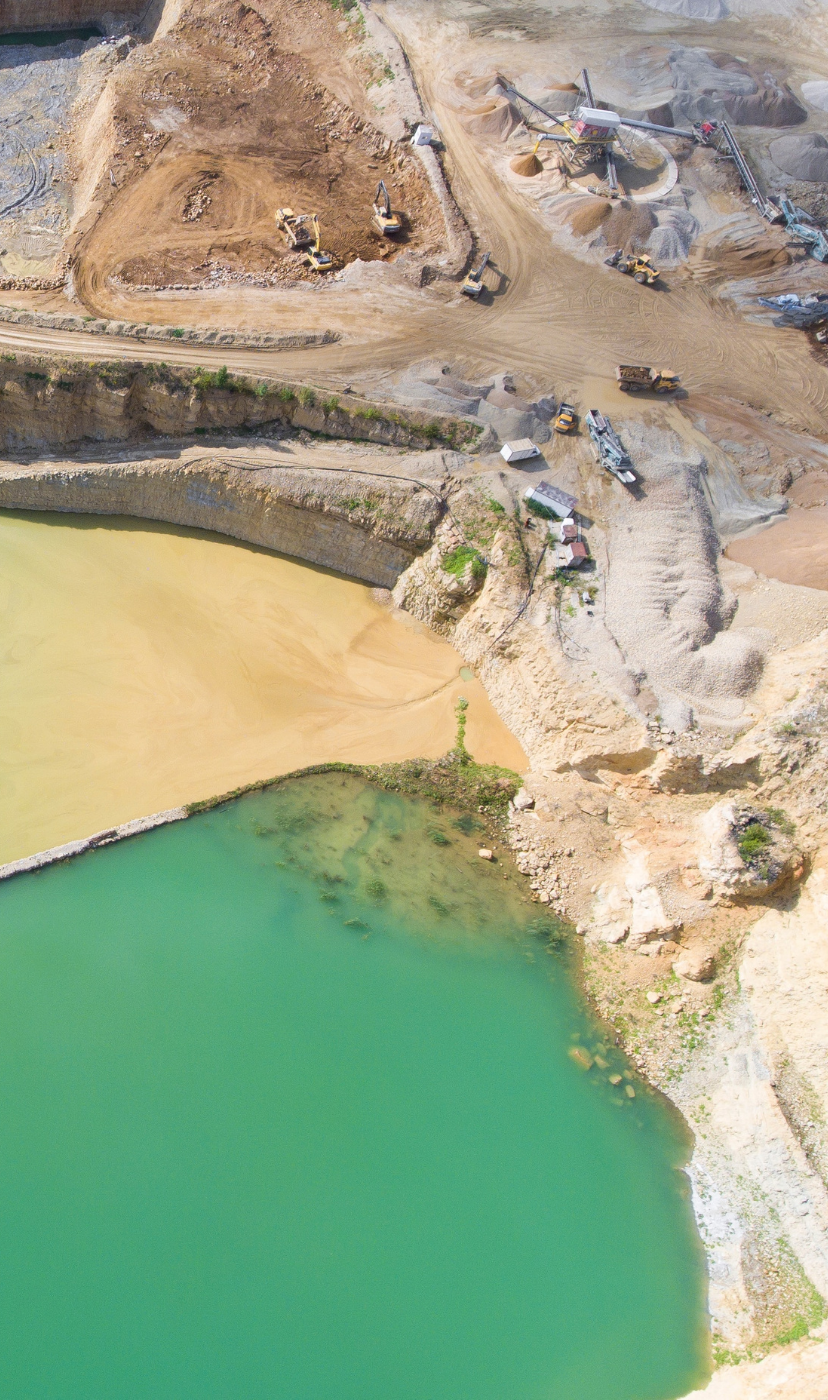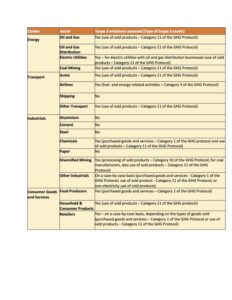These FAQs have last been updated in October 2025 to reflect the most recent Benchmark iteration.

Frequently Asked Questions: Net Zero Company Benchmark
The Climate Action 100+ Net Zero Company Benchmark annually assesses focus companies’ decarbonisation strategies and alignment with emissions pathways. These assessments provide a tool for investors to understand their exposure to climate-related financial risks and opportunities.
About the Benchmark
The Net Zero Company Benchmark assesses the performance of focus companies against the three high-level goals agreed to by signatories: mitigating financial risk by reducing greenhouse gas emissions, improving climate governance, and strengthening climate-related financial disclosures. It contains two types of complementary analyses drawing on public and self-disclosed data by companies.
Stakeholder feedback has shown that the Benchmark supports investors as they set company-specific engagement priorities, track progress, and exercise shareholder rights. It presents a useful tool to:
- Act as an independent reference point, assessing company climate performance in a consistent and comparable way.
- Shine a light on climate-related corporate risk factors most material for investors.
- Provide a clear signal of investor priorities, helping companies raise awareness, strengthen disclosures, and set climate targets.
- Highlight industry standards and may help shape disclosure norms beyond the Climate Action 100+ focus list.
The Benchmark builds on successive consultations with investors, companies, NGOs and other relevant stakeholders. In recent years, this has included:
A public feedback survey on the framework and methodologies used for the March 2022 Benchmark company assessments, which was launched in November 2021 and open until April 2022.
A public consultation on a set of proposals to enhance the Net Zero Company Benchmark for the next phase of Climate Action 100+, which opened in October 2022. The survey was open until 11 November 2022 and allowed investor signatories and other stakeholders to share their views on the proposed indicators for the 2023 Benchmark iteration. The feedback was collated and considered in the development of the methodology used for company assessments in 2023.
Since this consultation, the Benchmark framework has been kept largely consistentin order tomaintain continuity and track progress of focus companies. However, you can view the full history of the Benchmark tool and changes applicable to the Benchmark here. Please share yourfeedback here or reach out to us at [email protected].
As part of the annual review process, on 23rd May 2025, focus companies were invited to notify the TPI Centre of any relevant commitments and disclosures that were publicly available and not yet reflected in their preliminary 2025 Benchmark Disclosure Framework assessments, which they believed could improve their scores. These submissions were then considered by the TPI Centre and preliminary scores were updated, where relevant. The deadline for company feedback on preliminary Disclosure Framework assessments was 23rd June 2025. There were no exceptions or extensions after the deadline.
For more information on all research partners, please refer to their review and redress processes.
About the Methodology
Past Net Zero Company Benchmark company assessment results can be downloaded in Excel via the key findings page.You can also access past results via company scorecards using the link ‘Download Past Assessments.’
The Net Zero Company Benchmark draws on distinct analytical methodologies and datasets based on public and self-disclosed data from companies. These evaluate focus companies’ performance against investors’ expectations and company progress on the net-zero transition.
The assessment of company actions against the Benchmark Indicators serves as a starting point for investor signatories’ engagement with companies. However, investors have differing mandates, priorities, and starting points – along with jurisdictional, regulatory, and best-practice considerations – which inform how they make decisions and shape their engagements at local, sectoral, and company-specific levels.
The Benchmark draws on public and self-disclosed data from companies: read more about the detailed methodologies of each research partner on our methodologies page.
The Net Zero Company Benchmark Disclosure Framework provides a sector-neutral set of indicators and assessments designed to assess companies’ readiness for the net zero transition. It outlines the key elements of a credible decarbonisation strategy that are relevant across all sectors and regions.
In addition, CTI and RMI have produced sector-specific assessments for companies in the Oil and Gas, Electric Utilities, Steel, Cement, Aviation and Autos sectors. For 2025, only CTI’s Oil and Gas assessments have been updated; all previous assessments remain available on our website.
Climate Action 100+ recognises the sectoral and regional nuances within the Benchmark and the importance of applying a deeper level of specificity in investor engagements. Some of these nuances are reflected in the ‘Notes’ section of each company’s online Benchmark scorecard.
The Benchmark does not specifically seek to score or rank companies. As every component of the Benchmark is important, the intent is to ensure that investors and other stakeholders give all Indicators, Sub-indicators, Metrics, and Alignment Assessments due consideration, rather than focusing on overall rankings or scores.
Company assessments are intended to draw investor attention to the most significant aspects of corporate decarbonisation strategies and companies’ climate action or inaction. Some indicators may have greater relevance for certain companies, sectors or regions than others.
The Benchmark Disclosure Framework and the TPI Centre’s methodologies to assess focus company alignment with global climate scenarios are derived from the absolute emissions pathways and total carbon budgets developed by the International Energy Agency (IEA).
However, performance is expressed in emissions intensity terms to enable fairer comparisons between companies and account for differences in size and scale. For example, if a large company reduces its absolute emissions by a certain amount, that reduction may represent only a small proportion of its total footprint. The same absolute reduction by a smaller company, however, could represent a far greater effort relative to its size.
By using emissions intensity as the metric, the Benchmark allows for more meaningful comparisons of companies’ emissions reduction targets and progress. You can learn more by downloading the Disclosure Framework and Methodology.
In the longer term, the investor networks that coordinate Climate Action 100+ may consider incorporating additional features to assess and compare absolute emissions trends.
Scope 3 applicability has been defined based on research conducted to quantify materiality at the sector level, rather than at the individual CA100+ focus company level, whilst ensuring compatibility with the TPI Centre’s Carbon Performance assessment methodologies.

Please note that there are some exceptions to the above Scope 3 applicability classifications and this approach is subject to review based on latest research. Please get in touch with us at [email protected] if you would like to learn more.
Offsets are explicitly referred to in the methodology guidance for Sub-indicator 5.1 of the Disclosure Framework, which asks that any decarbonisation strategy “clearly identifies,and subsequently quantifies, the set of actions the company will implement to achieve its decarbonisation targets (such as phasing out carbon intensive products or assets, developing or deploying low carbon technologies, decarbonising supply chains or using offsets).”
In 2023, two new metricswere added to the Disclosure Framework to strengthen the assessment of company disclosures on offsets:
The new Metric 5.1.c assesses company disclosures on the use of offsets and negative-emissions technologies, developed following public consultation feedback in late 2022.
The new Metric 11.3.c evaluates the comprehensiveness of company disclosures on carbon-credit retirement.
These Metrics do not endorse or promote the use of offsets and negative emissions technologies in corporate decarbonisation strategies. Instead, they assess whether company disclosures are sufficiently transparent and robust to inform investor engagement. Companies are encouraged to be clear about how offsets are used, and to distinguish between internal emissions reductions and those achieved through offsets
At present, there is no agreed methodology for integrating offsets into sectoral assessment models, such as the TPI Centre’s Carbon Performance methodology. All TPI Centre benchmarks – relevant to Sub-indicators 2.3, 3.3, 4.3, and 11.1 – represent progress on emissions reductions within each sector, independent of offsets. Similarly, RMI and CTI do not incorporate offsets into their modelling.
Many investors consider that the use of offsets or carbon credits should be limited, and avoided where viable decarbonisation technologies exist.